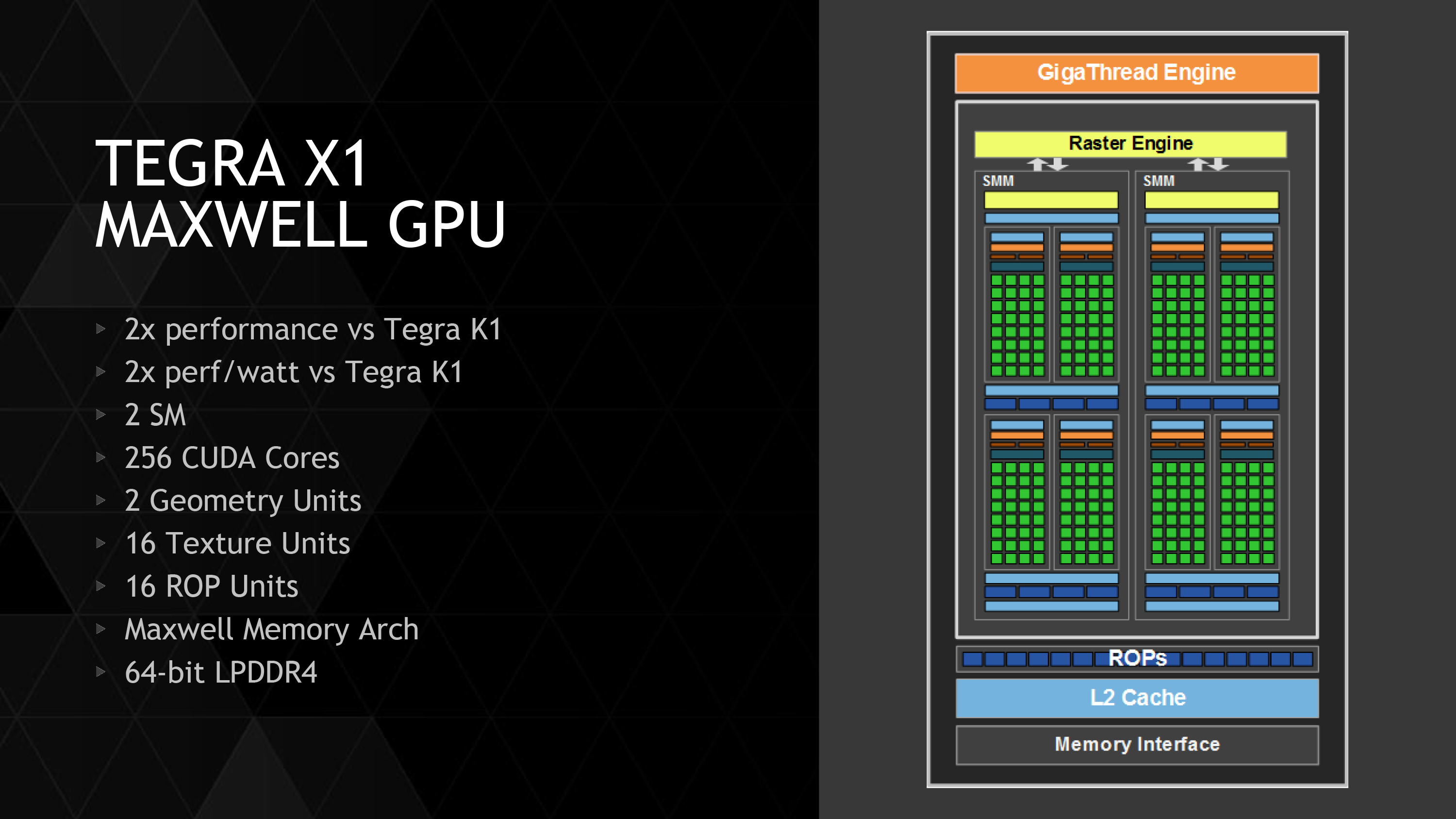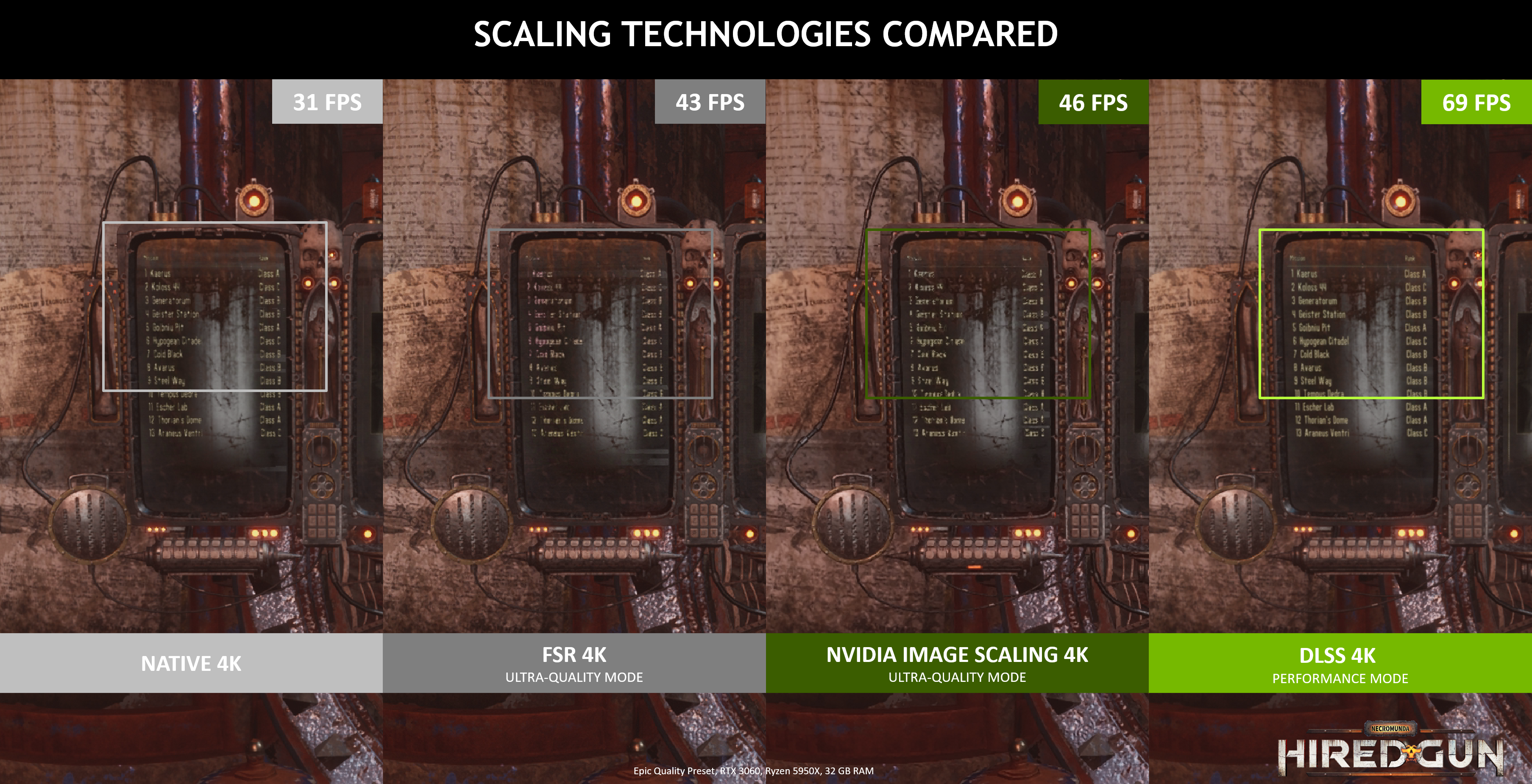FSR / NIS provide comparable quality for considerably greater performance while tensor cores on Nvidia's hardware can then be used for particle and physics simulation in games.
Uuuuuuuuuuuuuuuuuummmmmmmmmmmmmmmmm
No.
like, NIS/FSR is a okay option when DLSS (and likely XeSS later) aren't available.
But on their own they do have limits.
And NIS/FSR only gain considerable performance increases at 4x which at that point, especially if you drop below 1080p, Image quality starts to degrade heavily (NIS Retaining IQ better at sub 1080 IR's versus FSR but still)
DLSS trades some performance for
- Far better Image Quality than NIS/FSR when you go beyond a 1.175x multiplier (Ultra Quality NIS/FSR)
- Far more RANGE
- NIS 4K bottoms out at 1080p and it honestly doesn't look the greatest but it is okay in a pinch and if the game's TAA/DRS solutions that exist already take kindly to it and someone doesn't go idiotic with the sharpening filter. The same rules apply with FSR.
- DLSS on the other hand can go all the way down to 720p for a direct upscale up to 4K.
- And not to mention on top of that NVIDIA Excplicitly recommends developers implement DLSS And NIS together and that users can use them together so for practical applications that more or less means that the IR Threshold to reach 4K out increases even further to 480p IR with DLSS Ultra performance 1440p being upscaled to 4K via NIS 2x (Ultra Performance 1080p in most games is too unstable because DLSS's bottom res in a PC environment seems to be higher than 360p and below 480p)
- For reference on the DLSS Options that Dane could use, here's a playlist with videos of the same area in Control at different DLSS settings
Even 360p to 1080p, while yeah is quite fuzzy, honestly isn't too worse than Xenoblade 2 when in portable mode (And is just better as you could DLDSR down to 720p again to restore image stability in portable mode)
And if Devs have the multiplier for DLSS unlocked to pick whatever they want up to a 9x multiplier, they could pick a res like 540p to 1620p which should have even better characteristics than 1440p Ultra performance while running better than 4K ultra Performance, being an even better candidate to get upped to 4K via NIS as it would be a <2x multiplier to get 1620p to 4K.
Heck, Horizon Forbidden West runs it's Performance mode output at 1800p?
600p Internal Resolution to get to 1800p with DLSS Ultra Performance, which honestly versus 540p to 1620p likely would be the best middle-ground Ultra Performance option if devs had the option to do that if 720p to 4K was not performant enough.
Or heck, if a dev lost their mind and wanted to be like the devs of the Tourist on PS5 and Series X downsampling from 8K to 4K.
1080p to 3240p (higher than 6K) DLDSR'd back to 4K should be possible if a game hits 1080p on Dane if it had enough TOPs (or if we are saying it's a PS4 teir system so 900p would be the norm, 900p to 2700p, IE higher than 5K)
Theoretically, Mario Kart 8 Deluxe could do it actually as on OG Switch it locks 1080p 60fps more or less
Now that last example is very much a scenario that may require a DLA and 8SMs in Dane, but you get the point about the power of DLSS and its potential in an optimized environment now?





